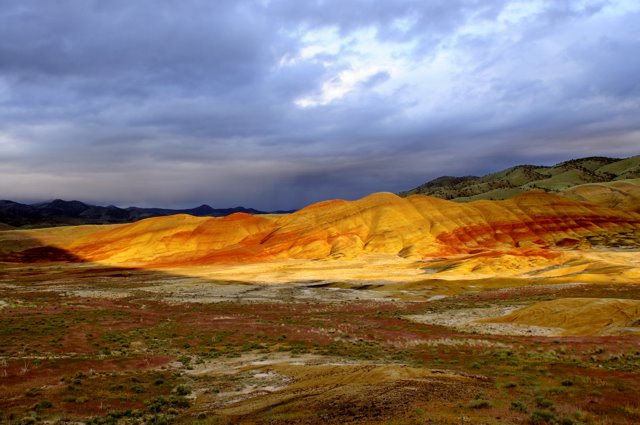A monopod is a one legged camera support that is designed to be used when you will be moving your shooting position often or you have very little space to set up in. This can be when you are in a crowd such as at a parade, or like you see at sporting events when a bunch of photographers are forced together in a small space. As with tripods, monopods come in all levels of quality and features.
When using a monopod, you become the missing parts of a tripod yourself. It should be longer than you are tall and should not be simply stood with the leg perpendicular to the ground. Instead it should extend out in front of you as a tripod leg would. You need to lean in to it a little and stand with your feet apart in a comfortable but sturdy position.
Some features to consider when buying a monopod include, but are not limited to, it's length, weight, and how easily and quickly it can be extended. Another important feature is whether you screw it to the tripod hole directly or that it has a head with a quick release base such as tripods use. This is really the best way to go and you can get monopods that use the same bases as tripods to if you look for them.
Of course monopods have their place in the photographers tool kit like everything else, and they have their avid fans too. Personally I prefer to always have my one of my tripods with me. If I want to use it as a monopod I simply extend only one leg. That way I still have my tripod available for those times when a monopod can't do the job.
Thursday, June 4, 2009
What is a Monopod?
Subscribe to:
Post Comments (Atom)
Photography Tips
Here are a few things you can do to improve your photography that will apply regardless of what camera you use. These are the basics that every photographer should know and do to get reasonably good pictures out of any camera.
Make sure you have a clean lens. Don't just blow the dust off, but use a clean cloth suitable for cleaning lenses and do it right.
Set up so your camera is stable and won't move as you press the shutter. You can do this a number of ways. If you will be handholding the camera, hold your elbows in against your sides, and stand with your feet apart with one slightly forward of the other. You can also lean against a solid object like a light pole, tree, building or whatever. The best method though is to use a tripod or monopod. I have both but I like to carry the tripod best. If I want to use it as a monopod I just extend only one leg and us it as I would a monopod. I'll add instructions about to how to use these tools later.
Finally the "First" basic thing you need to do is read your manual and learn what all the parts of your camera are for and how to use them. If you understand how your meter works and what white balence is you'll go a long way to getting that shot you want when the light is wierd and you are wondering why your pictures are all dark or yellow instead of like what you saw on the monitor or in the viewfinder.
I'll expand on all these topics in the coming weeks and months so you'll want to check back and see what I've added from time to time.
Make sure you have a clean lens. Don't just blow the dust off, but use a clean cloth suitable for cleaning lenses and do it right.
Set up so your camera is stable and won't move as you press the shutter. You can do this a number of ways. If you will be handholding the camera, hold your elbows in against your sides, and stand with your feet apart with one slightly forward of the other. You can also lean against a solid object like a light pole, tree, building or whatever. The best method though is to use a tripod or monopod. I have both but I like to carry the tripod best. If I want to use it as a monopod I just extend only one leg and us it as I would a monopod. I'll add instructions about to how to use these tools later.
Finally the "First" basic thing you need to do is read your manual and learn what all the parts of your camera are for and how to use them. If you understand how your meter works and what white balence is you'll go a long way to getting that shot you want when the light is wierd and you are wondering why your pictures are all dark or yellow instead of like what you saw on the monitor or in the viewfinder.
I'll expand on all these topics in the coming weeks and months so you'll want to check back and see what I've added from time to time.

No comments:
Post a Comment